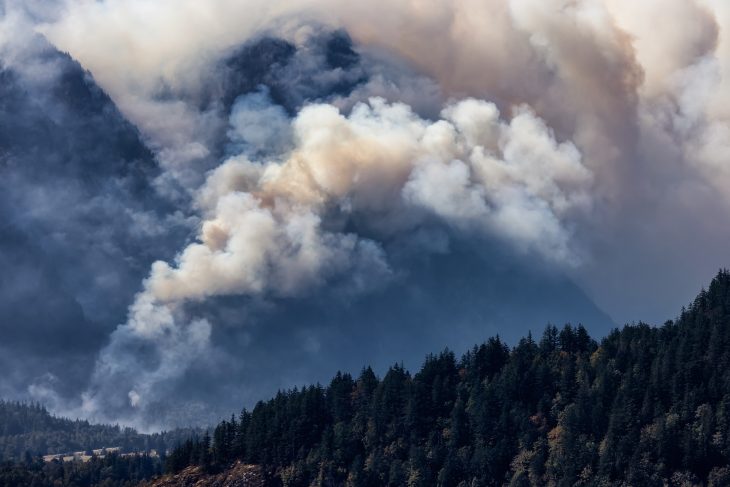
Wildfires are a natural and integral part of the Canadian landscape. They play a crucial role in shaping ecosystems and maintaining the health of forests. However, they can also pose significant threats to human life and property. Here are 20 fascinating facts about Canadian wildfires that you may not know.
Canada’s Vast Forests
Canada is home to nearly 10% of the world’s forests. With such an extensive forest cover, it is no surprise that wildfires are a common occurrence in the country.
Frequency of Wildfires
On average, Canada experiences about 8,000 wildfires each year. These fires burn an area of approximately 2.5 million hectares, equivalent to nearly half the size of Nova Scotia.
The Role of Lightning
Lightning strikes are responsible for approximately 35% of all wildfires in Canada. These fires tend to be more severe as they often occur in remote areas and can burn uncontrollably for days before they are detected.
Human Influence
While lightning is a significant cause, human activities account for nearly 55% of all wildfires. These activities include unattended campfires, discarded cigarettes, and arson.
Fire Season
The wildfire season in Canada typically runs from April to October, with the peak occurring in July and August. However, climate change is leading to longer fire seasons.
The Fort McMurray Wildfire
The Fort McMurray wildfire in 2016 was one of the most devastating in Canadian history. It resulted in the evacuation of 88,000 people and destroyed approximately 2,400 homes and buildings.
Climate Change and Wildfires
Climate change is exacerbating the frequency and intensity of wildfires. Rising temperatures and changing precipitation patterns create ideal conditions for fires to ignite and spread.
Economic Impact
Wildfires have a significant economic impact. The Fort McMurray fire alone resulted in an estimated $9.9 billion in damages, making it the costliest disaster in Canadian history.
Firefighting Efforts
Canada has a robust system for fighting wildfires, involving ground crews, air tankers, and helicopters. The country also collaborates with international partners to share resources and expertise.
FireSmart Program
The FireSmart program is a national initiative that helps communities and individuals reduce wildfire risks around homes and properties. It promotes practices such as clearing vegetation and using fire-resistant materials.

Wildfires and Wildlife
Wildfires can have both positive and negative impacts on wildlife. While they can destroy habitats, they can also create new ones and promote biodiversity.
Smoke and Air Quality
Smoke from wildfires can travel thousands of kilometers, affecting air quality across the country and even in other parts of the world.
Regeneration After Fire
Following a wildfire, forests have a remarkable ability to regenerate. Fire clears away deadwood and releases nutrients back into the soil, promoting the growth of new plants.
Indigenous Knowledge
Indigenous communities have long used controlled burns as a land management tool. This traditional knowledge is increasingly being recognized for its value in preventing catastrophic wildfires.
The Largest Fire in Canadian History
The largest wildfire in Canadian history occurred in 2014 in the Northwest Territories. It burned an area of over 3.4 million hectares.
Fire Weather Index
The Fire Weather Index (FWI) is a system used in Canada to estimate the risk of wildfires. It takes into account factors such as temperature, humidity, wind speed, and rainfall.
Wildfire Research
Canada is a global leader in wildfire research. Scientists are studying everything from fire behavior and climate change impacts to mitigation strategies and the effects of smoke on health.
Remote Sensing Technology
Remote sensing technology, including satellites and drones, plays a crucial role in detecting and monitoring wildfires in Canada’s vast and often inaccessible wilderness areas.
Public Education
Public education is a key component of wildfire prevention. Authorities work to raise awareness about safe practices and the importance of reporting wildfires promptly.
The Future of Wildfires
With climate change, the future of wildfires in Canada is uncertain. However, ongoing research and proactive measures are helping to prepare for and mitigate the impacts of these natural disasters.
Conclusion
Canadian wildfires are a complex issue, with both natural and human-induced causes. They play a crucial role in shaping the country’s ecosystems, but also pose significant challenges. As climate change continues to exacerbate wildfire risks, it is more important than ever to understand these phenomena and take proactive measures to mitigate their impacts.
Frequently Asked Questions (FAQs)
What is the most common cause of wildfires in Canada?
Human activities are the most common cause of wildfires in Canada, accounting for nearly 55% of all fires.
How does climate change affect wildfires?
Climate change is leading to higher temperatures and changing precipitation patterns, which create ideal conditions for wildfires to ignite and spread. It is also resulting in longer fire seasons.
What was the largest wildfire in Canadian history?
The largest wildfire in Canadian history occurred in 2014 in the Northwest Territories, burning an area of over 3.4 million hectares.
How does Canada fight wildfires?
Canada has a robust system for fighting wildfires, involving ground crews, air tankers, and helicopters. The country also collaborates with international partners to share resources and expertise.
What is the economic impact of wildfires in Canada?
Wildfires have a significant economic impact in Canada. For example, the Fort McMurray fire in 2016 resulted in an estimated $9.9 billion in damages, making it the costliest disaster in Canadian history.
Was this page helpful?
Our commitment to delivering trustworthy and engaging content is at the heart of what we do. Each fact on our site is contributed by real users like you, bringing a wealth of diverse insights and information. To ensure the highest standards of accuracy and reliability, our dedicated editors meticulously review each submission. This process guarantees that the facts we share are not only fascinating but also credible. Trust in our commitment to quality and authenticity as you explore and learn with us.
